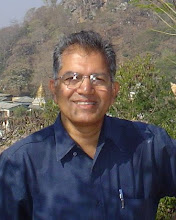Elsewhere he acknowledges having been inspired by O. Lacombe to explore the potential of analogy in Sankara. See his "Sankara Vedanta and Christian Theology".
Yet again he implicitly acknowledges having borrowed the 'use of capitals' from Pessein.
J.F. Pessein, Vedanta Vindicated (1925). Drew approval of Radhakrishnan and S. Vedanta Aiyengar. Use of capital letters to clear up the Advaitin’s understanding of sat and asat.Further, the insight into the personal nature of the para Brahman is also itself borrowed.
Pessein also clarifies the personality of the Absolute. Modern Hindus are unaware of the Christian meaning of person, and call impersonal the very same nirguṇa or incomplex Godhead that Christians deem personal. The divergence is merely verbal: we agree in the thing itself. [“Śaṅkara Vedanta and Christian Theology” 1980 38. So even this is taken by DS from his Jesuit tradition.]So De Smet borrowed many of his principal insights from others: analogy from Lacombe; use of capitals and personality of Brahman from Pessein; the relative infrequency of maya in Śaṅkara from Hacker. Yet the use he made of these sets him apart from them, and marks him as original. Thus, for example, despite their discoveries, both Lacombe and Hacker continued regarding Śaṅkara in the traditional manner as acosmist and illusionist.
What I really need to do is to see how De Smet systematized his interpretation of Śaṅkara. And for this, it is not enough to study his explicit interpretations of Śaṅkara; I would have to go to his articles and notes on metaphysics, etc. I remember that when I studied the ontological status of the soul in Śaṅkara, De Smet was not overly satisfied: you have still much to learn, he told me. To most of us he would say, study causality. We never understood just why. We wanted to settle the question of whether or not Śaṅkara was acosmist; we wanted to know whether or not he regarded the human soul as ontologically distinct. Now I begin to understand: meaning is fixed ... by a systematic set of categories? To understand and to settle whether or not Śaṅkara was acosmist, one has to master a whole set of terms and relations: (interiority:) being, knowing (experiencing, understanding, judging; consciousness), objectivity; (metaphysical:) causality, creation.

No comments:
Post a Comment